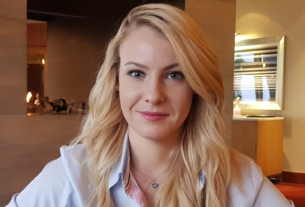LinkedIn has rated creativity as the most critical skill companies need today. This is vital in a VUCA environment (Volatility, Uncertainty, Change and Ambiguity) where it does not help to look at the past for answers. VUCA requires new thinking, Creativity is the key to unlocking this. Yet we know through the years, that although the majority of companies will say creativity and innovation are important, many need to learn how to make it happen.
Would you like your teams to be more creative?
Here are 3 SynNovation tips for building creative confidence.
- Tell your team to believe in their own creativity
- Assume positive intent among individuals in your teams
- Allow people to try, fail and learn.
These tips may sound too good to be true. The old adage if it is too good to be true, it normally is, does not apply here. It is that simple. Try it this week and see. You have nothing to lose.
Tell your team to believe in their own creativity
To build creative confidence Tom Kelly, founder of Idea says the first step to increase your creative confidence is to choose to believe you are creative. It really is that simple. Many people believe that they are not creative – that one is born creative. If one does not believe one can be creative or a creative thinker, one will not even try. Secondly, the truth is that we are almost all born creative – 98% of children between the age 3 to 5, score genius level with creativity. Only 2 % of adults retain this skill. Creative capacity is a skill we all have, but most have learnt not to use it, mainly for fear of failure, ridicule or making mistakes. The first step to growing creativity is to recognise, and then nurture the natural creative thinking skills that have been dormant.
“The creative adult is the child that survived.” Picasso
Assume positive intent among individuals in your teams
Most people fear ridicule or failure. This fear is one of the biggest barriers to creativity in the workplace. When one encourages a team to be creative, one needs tools to communicate and demonstrate that the workplace is a safe environment to test their creativity. The most powerful tool is a simple assumption. A mindset that is stated and demonstrated. To assume positive intent of team members; to choose to believe that the team’s actions, ideas and suggestions are there to benefit the team or organisation. Wouldn’t everyone rather want to be part of a successful, productive project, team, or company? So why not treat them that way? And listen to new ideas with the mindset that they will do what is best for a successful team.
Go on – just try it. You have nothing to lose. We challenge you to assume positive intent and see the difference. And not just in the workplace. Try it at home too. We are confident that it will change something in your life. If it doesn’t I will eat my hat (not that I have one!)
Allow teams to try, fail and learn.
“Our secret to success is repeated trial and error over the efforts of a lone genius” is a mantra used by the product invention company Ideo. To me, it says a number of things.
- Repeated trial and error Success is a process. There are no “failures” just unexpected results. Try new things, if it does not work at first, see what works then modify. Then repeat until it is good enough.
- Don’t be afraid of error. See it as an experiment and what you can learn from it.
- Lone genius. The ideas and efforts sparked by a motivated engaged team can far outstrip the achievements of one person working in isolation
“Repeated trial and error succeed over the efforts of the lone genius.”
The first two steps:
- getting the team to believe in their own creative thinking skills and
- to assume positive intent – will give your team a great head start to start thinking in new ways and to start trying new ways of things to improve whatever is your pain point – products, team performance, production, processes, systems.
If you are a sceptic, try the following:
- Divide the team into two groups.
- Give each team the same task to come up with new thinking to solve a problem.
- Treat team A the way you normally would. Use the above 3 tips with team B. At the end of a week, look at the ideas, the team collaboration and atmosphere in both teams. Then decide if creative intelligence is a good way forward.





